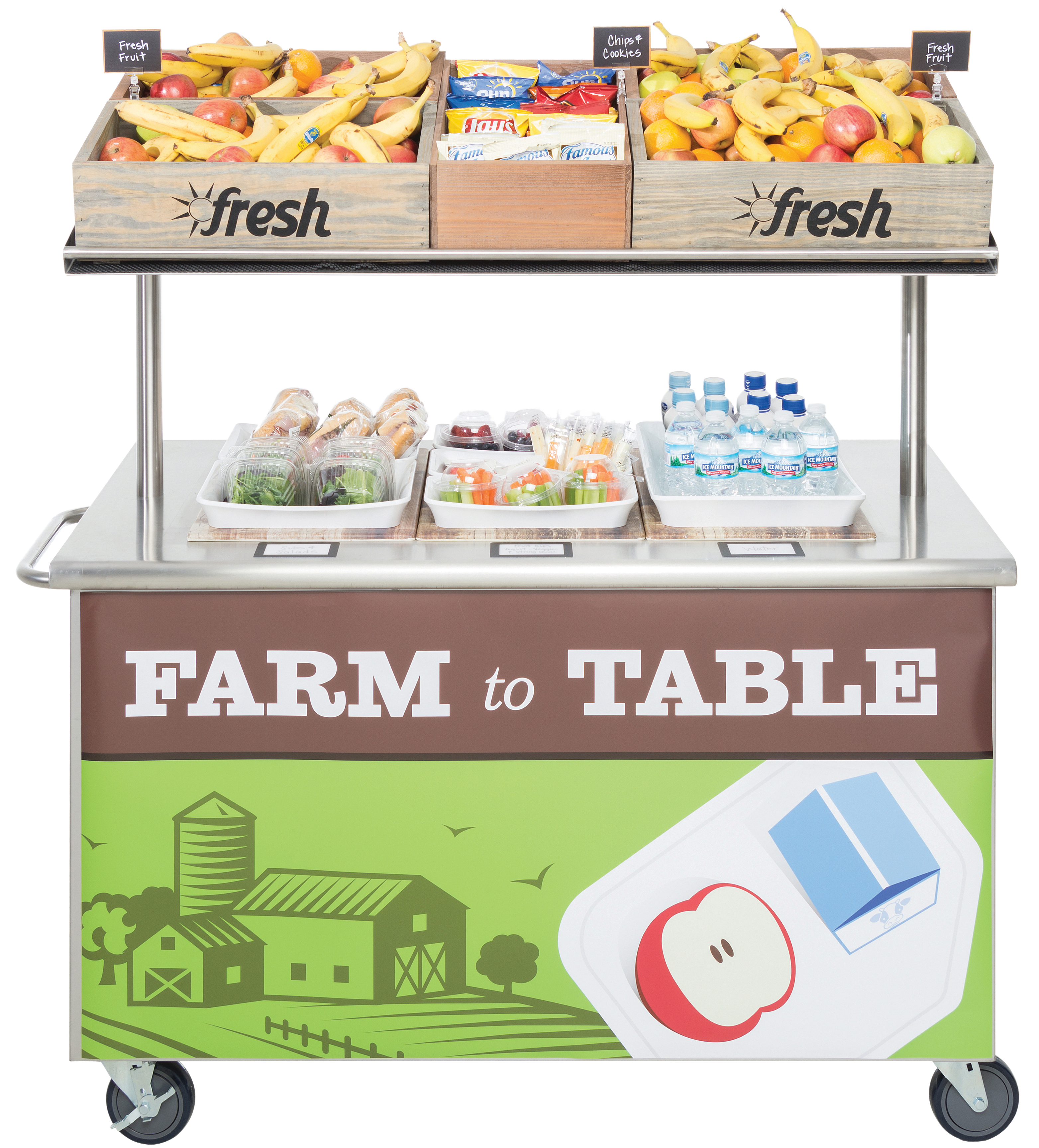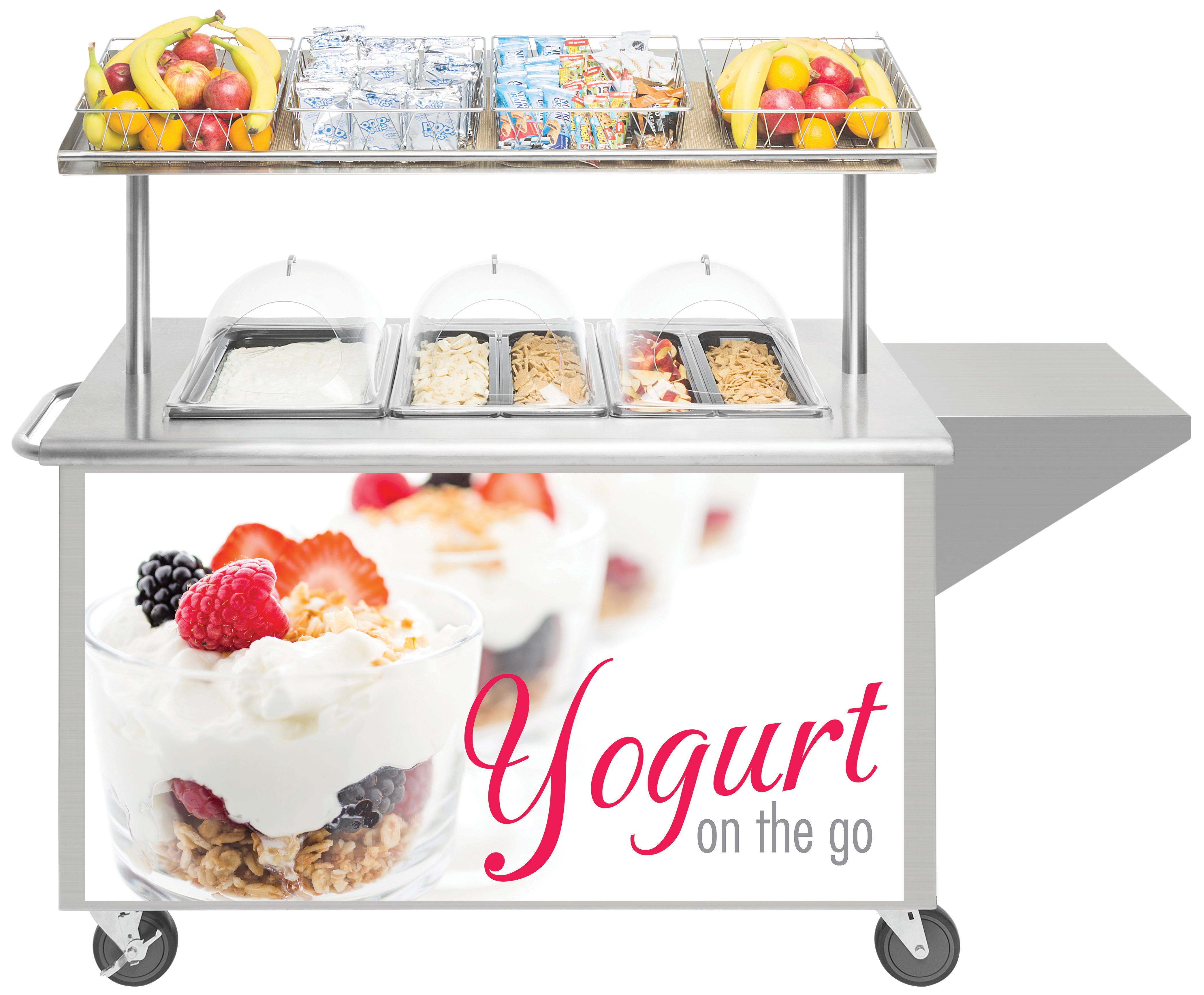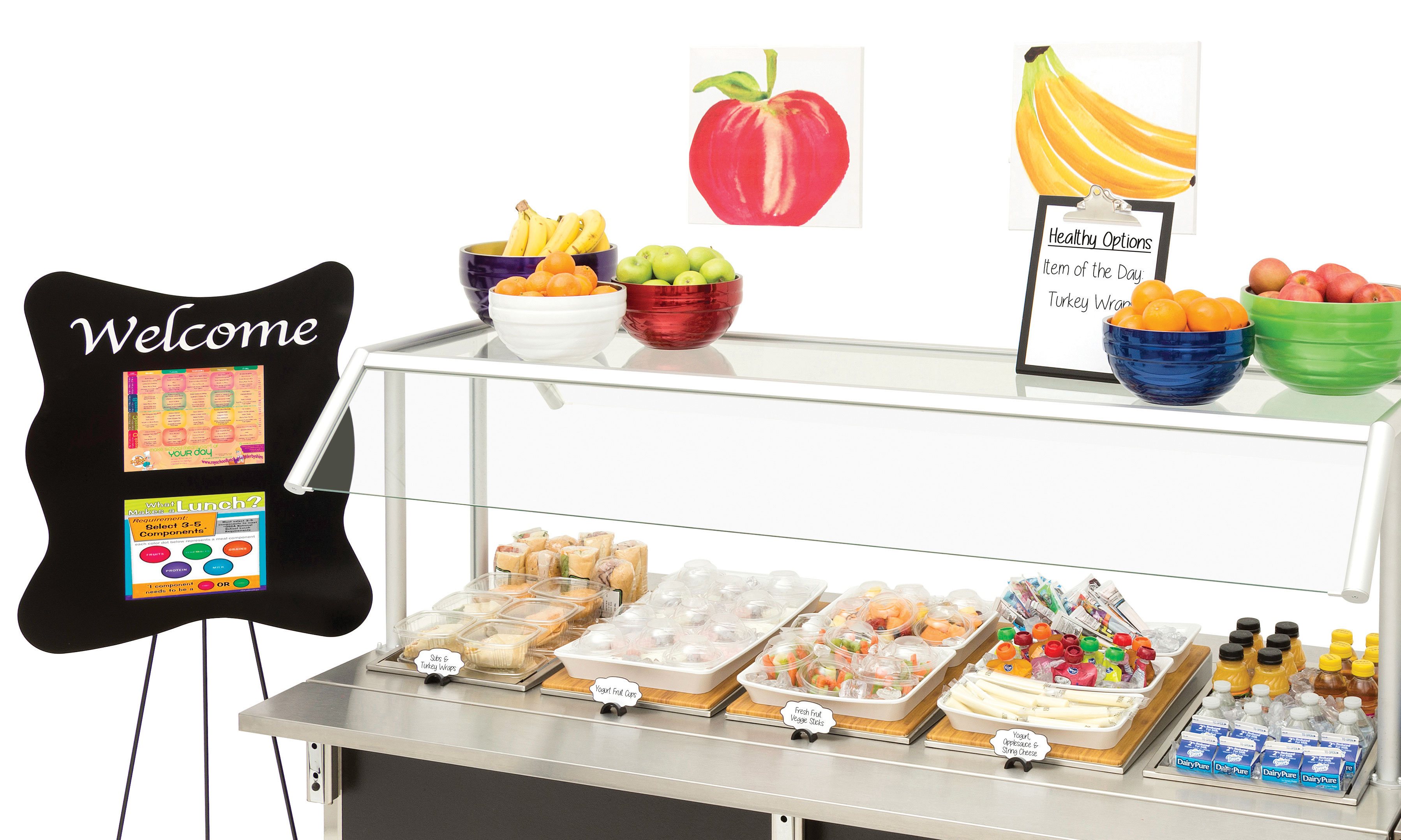Currently, one in three school age children are not only overweight or obese but are also at an increased risk of developing heart disease and diabetes. School communities are increasingly becoming places where healthy habits can flourish. School lunch, breakfast, and snacks account for the majority of the food that kids eat during the week. For this reason, providing access to healthy, nutritionally balanced food at school will help students focus and excel in their classes, while also helping them develop good eating habits for life. HUBERT® Mobile Carts are a portable service option that can be used anytime, anywhere. Encourage students to make healthy choices by serving fresh fruit and veggies during lunch or snack time or overnight oats during the breakfast rush, HUBERT® has the tools you need to help win the fight against childhood obesity.







